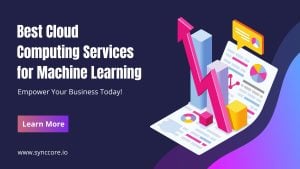The cloud services domain is in a perpetual state of transformation, characterized by revolutionary technologies that redefine our interactions with digital assets. This article delves into three interconnected trends reshaping cloud services’ horizons: Serverless Computing, Edge Computing, and the Integration of AI. These trends are revolutionizing business operations, enriching user experiences, and unlocking unprecedented potential.
Table of Contents
Serverless Computing
Unleashing Efficiency and Scalability Contrary to its name, serverless computing doesn’t entail the eradication of servers; rather, it involves abstracting server management tasks. Within this framework, developers can focus exclusively on coding, free from concerns of provisioning, scaling, or server upkeep. This efficiency arises from a pay-as-you-go model, where users are billed based on actual resource consumption.
Advantages
Streamlined operational burden: Serverless platforms handle auto-scaling and resource provisioning.
Economical resource usage: Users only pay for utilized resources, optimizing allocation. Amplified developer productivity: Developers can dedicate themselves to coding and innovation.
Challenges
Vendor dependency: Specific serverless platforms might tether users to a particular cloud provider.
Latency during cold starts: Initial request processing can encounter delays due to server initialization.
Edge Computing
Bridging the Divide Between Cloud and Devices Edge computing relocates data processing nearer to the data source or user device, curtailing latency and enhancing real-time processing capabilities. By conducting data processing locally, at the “edge” of the network, edge computing facilitates quicker responses and curbs data transfer to the cloud.
Advantages
Minimized latency: Real-time processing heightens response times and user experiences.
Optimized bandwidth usage: Reduced data transfer to the cloud diminishes network congestion.
Offline functionalities: Devices can function with limited or intermittent connectivity. Challenges:
Security apprehensions: Dispersion of data processing raises concerns about security and privacy. Management intricacy: Operating and maintaining edge devices in distributed environments can be intricate.
AI Integration: Elevating Cloud Services with Intelligence Artificial Intelligence (AI) is permeating diverse sectors, and cloud services offer a natural platform for assimilating AI capabilities. AI-infused cloud services proffer refined analytics, prognostic insights, and automation, empowering businesses to forge data-driven choices and streamline workflows.
Advantages
Advanced analytics: AI algorithms dissect extensive datasets to glean valuable insights.
Prognostic potential: AI models predict trends, enabling proactive decision-making.
Streamlined automation and optimization: AI-powered automation amplifies efficiency and resource allocation.
Challenges:
Data precision and bias: AI models rely on high-quality, unbiased data for precise outcomes.
Skills disparity: Crafting and deploying AI solutions necessitate specialized expertise.
Conclusion
Serverless computing, edge computing, and AI integration are remolding the topography of cloud services, endowing businesses with greater agility, responsiveness, and innovation. These trends are interwoven, with serverless architectures buttressing AI applications and edge computing curtailing latency for both. As technology advances and adoption proliferates, the fusion of these trends heralds a future where cloud services seamlessly amalgamate intelligence, speed, and efficiency, ushering in a new era of digital potential. Embracing these trends empowers businesses to remain at the vanguard of innovation and provide extraordinary experiences to their clientele.



